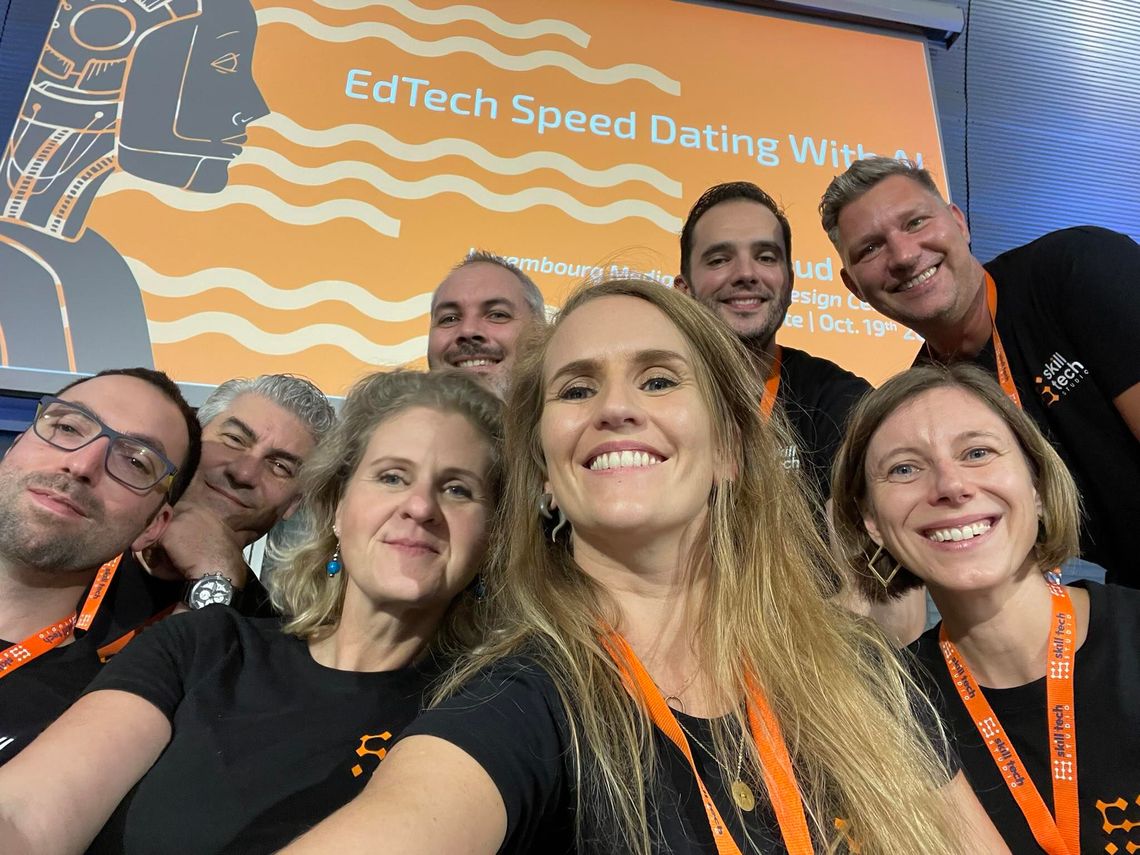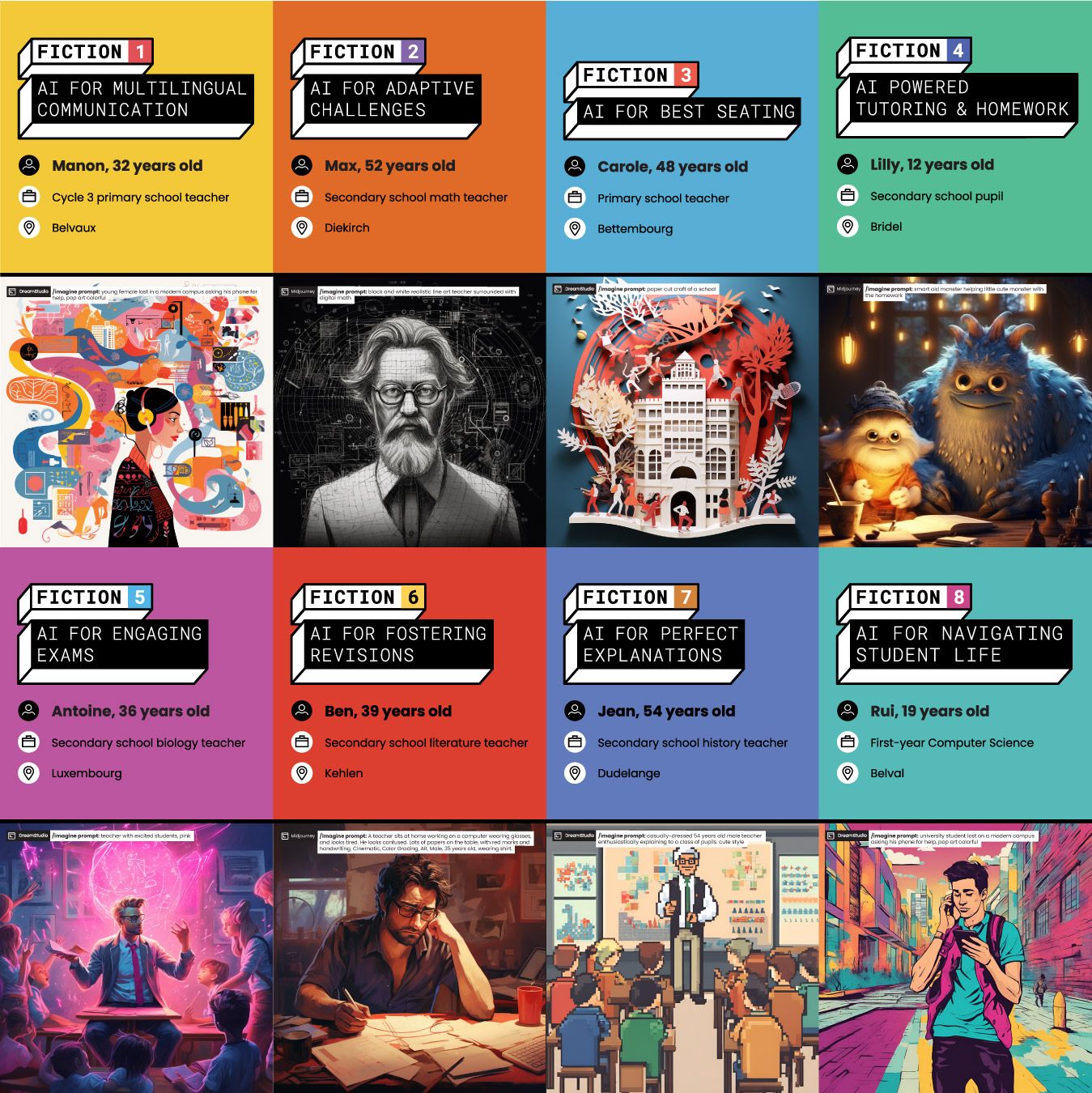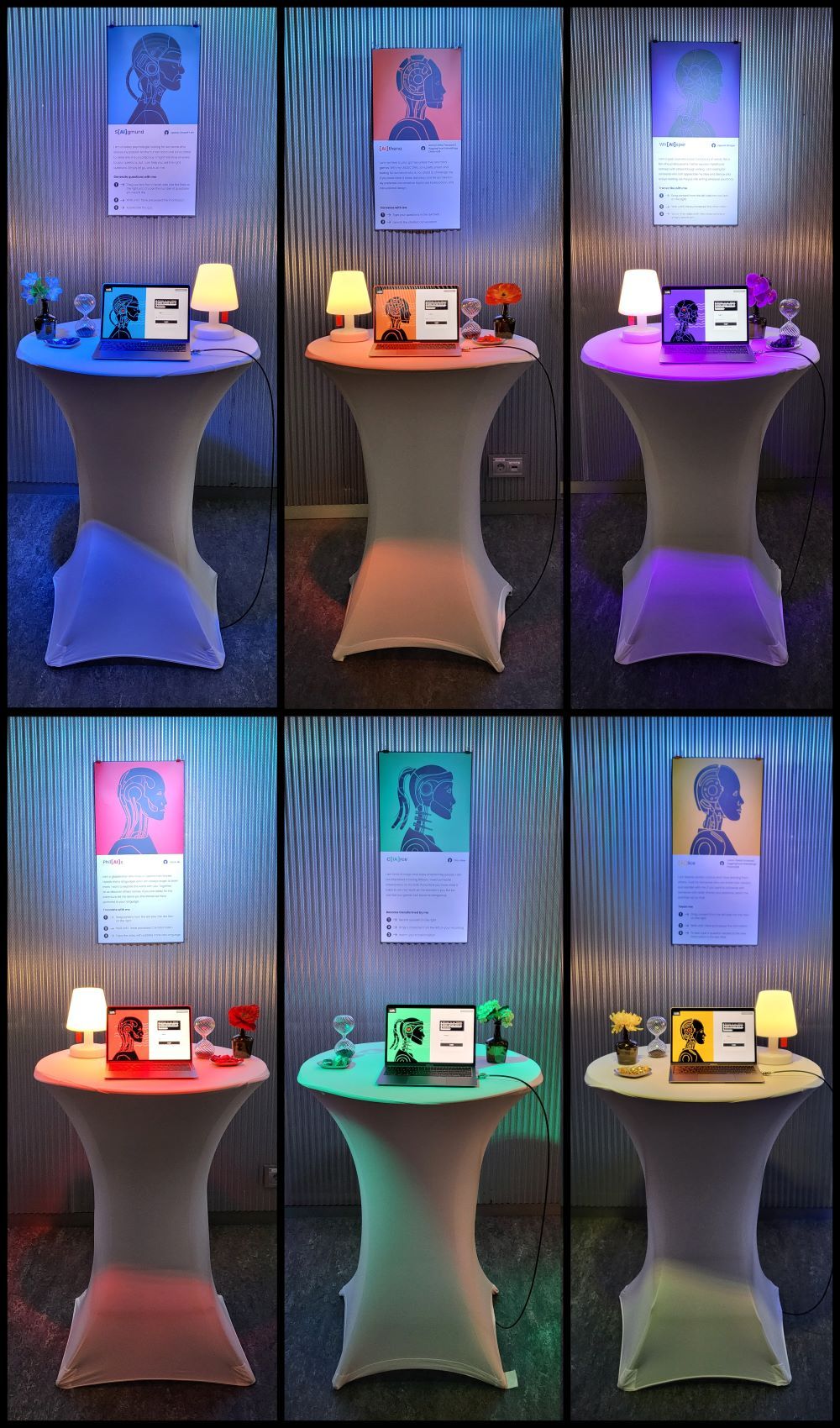Workshop “EdTech Speed Dating With AI”: Takeaways And Potential

It’s been a month since our first workshop « EdTech Speedating with AI »! This was the result of a very intense period of teamwork and dedication but given the active involvement of the participants in the prototypes and the scenarios, we feel that our objective of providing a concrete, hands-on experience has been achieved. What’s more, it’s always pleasant to hear from organisations that they have been longing for this kind of initiative in Luxembourg. Perhaps the most enlightening moment was the discussion with our guests that followed Thibaud’s presentation. This was a gold mine for us, as we amassed a lot of useful information that will help us to refine our response to the needs of the education, training, and learning ecosystem in Luxembourg in relation to AI and to adapt our offer accordingly. Finally, it has also been very gratifying to see that less than a few months after becoming fully operational, the LMDDC is becoming more visible and our wide range of capabilities are being recognised.
We are pleased to share our key takeaways from the workshop, based on our interactions with the attendees and the questions we received.
Do it yourself
Many were impressed by the fact that it was all developed in less than two months and running on our on-premise mobile server with no internet access. We went this route for several reasons:
A) Full-stack expertise: We wrapped all the open-source AI tools applicable to EdTech into a micro-service Python application. It was all done on our server, our hardware, so we knew exactly what it would take to get it into production on our infrastructure at Restena. We are happy to lend our mobile server to any partner who would benefit from using it in other projects (little anecdote: the server hostname is actually "happy").
B) Total Cost of Ownership (TCO): Thanks to the efforts of the open-source community, we didn't have to pay for any licence; in other words, on-premise open-source solutions have a much lower TCO than, for example, cloud systems. As a matter of fact, several participants were really puzzled by the cost effectiveness of eliminating this kind of fee (to find out more, read our dedicated post on the added value of using open-source in education here.
C) Sovereignty: Our data, hardware and software platforms are completely under our control, without compromising privacy. We are responsible for system configuration, updates and changes. We wanted to demonstrate our expertise by hosting everything in the workshop space.
D) Uptime: An on-premise mobile server is attractive for it gives you complete independence from external connectivity, which can be useful for certain applications. We also wanted to prove that it’s possible to have high quality, modern web-based softwares without relying on the internet or other external services.
E) Freedom to Operate: The use of both open-source and open standards ensures that beneficiaries retain complete freedom to choose who they work with, using the technologies of their choice, and with full access and control over their content.
Learner Stories
There was a unanimous acknowledgment of the quality of the posters illustrating the eight scenarios we created, both in terms of their aesthetics (form) and the original storytelling behind them (content). The different situations were designed to appeal to as many professionals as possible (teachers, pupils, students). Not only did we make sure to come up with bespoke suggestions for each of them, but we also gave participants the opportunity to check out the associated AI applications (both open-source and proprietary) on the spot by using a QR code. We have already been asked if they could be reused for other educational events or if we would be willing to help partners create their own (both answers are “yes”).

Tryouts
The same positive reception was given to our six prototypes. Overall, there was a lot of enthusiasm for their look and even more for their use, especially C[IA]rce and [AI]thena. On the one hand, participants were entertained to see how C[IA]rce’s deepfakes could assist educators give a class that goes beyond traditional visual and media formats. Bringing historical figures such as Albert Einstein, Marie Curie or Frida Kahlo to life in the classroom is fun, makes lessons more engaging and even helps students achieve their learning objectives faster. On the other hand, [AI]thena is a little gem with immense potential because it could open up endless possibilities for automation and enhanced user experiences. We built a chatbot that operates like ChatGPT, generating human-like text responses to a given prompt, conversing on a variety of topics, and formulating creative writing pieces. Athena was fed with all the scientific literature on digital learning we had collected for our intelligence activities to provide an accurate, relevant, and up-to-date interaction. It required careful design, evaluation, and improvement but we succeeded. We are expanding these efforts, sharing experience and expertise with colleagues from the LISER, among others.

Did you miss the workshop? We are currently working on an interface where all the prototypes will be stored and made available to the public. In the meantime, we can already point you to the open-source projects and repositories behind C[IA]rce (https://github.com/yoyo-nb/Thin-Plate-Spline-Motion-Model) and [AI]thena (https://github.com/imartinez/privateGPT). Are you curious about our other prototypes? Wh[AI]sper automatically generated a transcript and subtitles for a video: https://openai.com/research/whisper; Phil[AI]s went a step further than Wh[AI]sper, as the automatically generated transcription and subtitles could be translated into a chosen language: https://github.com/Helsinki-NLP/Opus-MT; [AI]lice used the same technology as [AI]thena, allowing teachers to upload text or video content and students to ask questions about it. S[AI]gmund was the only prototype based on ChatGPT. It generated assessment questions on a given content provided by teachers and instructors. We used a Python library to communicate with ChatGPT (https://pypi.org/project/openai/) and https://github.com/bonartm/quizdown-js to convert ChatGPT’s answer into a dynamic quiz.
Luxembourgish
There was a lot of discussions about the Luxembourgish langage. First, we identified a distinct need for a “speech to text” model to better respond to the multilinguism of the country, while ensuring that Luxembourgish is preserved and remains accessible to all. This model would allow the translation of Luxembourgish into written text (e.g. subtitles) in real-time through computational linguistics. Many public (and private) organisations would not only benefit from this, but could also consider getting involved in one way or another. Recent advances have enabled such AI-based models that can learn unique languages, by collecting large amounts of data to train algorithms. We are following this issue very closely and reflecting on how we might adress it with colleagues from the LIST and the University of Luxembourg. Another related issue is translation from/to Luxembourgish. Here we have a solid foundation, the Horizon 2020 open-source project OPUS-MT, which collects data from the web and translates it to provide the community with a publicly available parallel corpus. OPUS-MT provides more than 1000 models that can be downloaded and used free of charge. The inclusion of Luxembourgish is a task that the LMDDC would be interested in exploring and performing, and which could become an interesting project involving several interested parties.
AI is just a tool
Contrary to popular opinion, the workshop was the living proof that AI is not to be feared, as it can be domesticated and adapted to education, as long as there is a clear identification of the population that will use the AI and an understanding of their needs, context and constraints, which is a prerequisite for selecting the right AI tool. Of course, budgetary considerations must also not be overlooked, as even open-source has its costs (IT infrastructures, human resources skills and costs). At the LMDDC, we don’t believe that AI is a panacea – despite the current hype and the “fear of missing out” effect surrounding it – but rather a type of technology that can help educators and enrich the broader field of education in many ways, in the same fashion as, for example, virtual reality. We hope that this workshop has helped the attendees, a fortiori those involved in teaching activities, to get a clear idea of the possibilities offered by AI to support their mission through practical, real-life examples.
In conclusion, we encourage you to watch Thibaud’s speech, review his slides, reflect on this blogpost and on its potentialities, ask your questions, and spread the word about us, until our next workshop in the spring.


